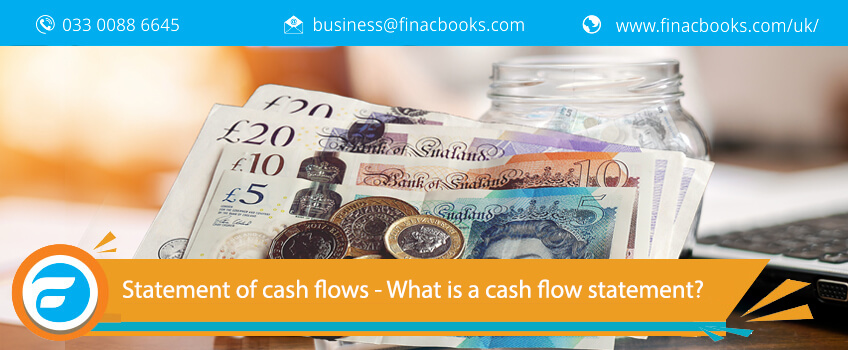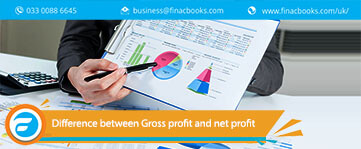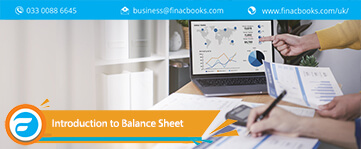Introduction to Cash Flow Statement
If we talk in terms of business, a cash flow statement is a summary of the actual or expected income and expenditure, i.e. incomings and outgoings of a firm or business over monthly, quarterly and annually. It also assesses the amount, timing and predictability of cash inflows and outflows and plays a pivotal role during budget formulation and business planning and mainly answers two questions such as:
- Source of money or income, i.e. where the money is coming from?
- Investment options, i.e. where the money is going to?

Normally, a cash flow statement would capture both the current operating results and the accompanying changes in the balance sheet and as an analytical tool. It helps in determining the short-term viability of a company in terms of its ability to pay bills. It also predicts future cash flows and helps in making informed business decisions. A generic cash flow statement would include people and groups such as:
- Shareholders of the business.
- Potential employees or contractors, who need to know whether the company will be able to afford compensation;
- Potential investors to decide and evaluate the company's financial health.
- Potential creditors or lenders, who would expect to have a clear picture if the company can repay or not, and
- Accounting personnel need to know if the organisation will be able to cover payroll and other immediate expenses.
Positive cash flow and Negative cash flow
When the money coming into the business is more than what is going out, it is known as positive cash flows. In other words, Positive cash flow means cash inflows exceeds cash outflows; it is known as positive cash flows. Maintaining a healthy company's cash flow makes cost management simple. You'll exactly know what is arriving and when, enabling you to establish payment terms for your outgoings that will not be missed. It's time to boost your cash flow if you're struggling to meet your financial obligations on a regular basis.
When the money going out from the business is more than what is coming in, it is known as negative cash flows. Negative cash flow means when cash outflows exceed cash inflows. While many business owners are vigilant about cash flow management, a sudden financial shock – such as a client going out of business or breaking down of the machinery can rapidly put you in the red. Once this happens, it becomes extremely difficult to raise revenue quickly enough to cover costs. Therefore, it is essential that you take as many preventative measures as possible to ensure that you are prepared for everything.
Activities involved in Cash Flow Statement (CFS)
A cash flow statement, also known and referred to as the statement of cash flows, constitutes the critical set of company's financial statement or information required for the successful operation of a business and presents the accounting data in three main sections:
1) Operating cash flows
Operation-related activities such as sales of goods and services: Cash flow from operation related activities is calculated by using the following formula:
Cash flow from operating activities = Net income + non-cash expenses + changes in working capital.
It would be no exaggeration to say that a continuous cash flow of an organization is similar to the continuous supply of oxygen to the human body. By making some changes in the working capital, you can ensure a constant cash flow for your business, i.e. if you prolong the time to pay the due bills, you can preserve the cash in the organization. Similarly, if you collect the bills owed to you or rather shorten it, you can accelerate the receipt of cash and similarly, if you delay the inventory purchase, you can preserve the cash in the company and ensure cash flow. Changes made in cash, accounts receivable, depreciation, inventory and accounts payable are reflected in cash from operations, and operating activities include:
- Interest payments
- Income tax payments
- Receipts from sales of goods and services
- Payments made to suppliers of goods and services used in production
- Salary and wages of the employees,
- Rent payments,
- Any other type of operating expenses.
2) Investing cash flows
Investment-related activities such as sale or purchase of an asset: Cash flow from investment-related activities reflects the company’s purchases or sale of its assets, and investing activities cash flow normally adds up to the cash outflow.
3) Financing cash flows
Financing activities such as borrowings or sale of common stock: Cash flow from the financing activities, as the name suggests, is related to the finance-driven changes to the cash flow and reflects the company’s purchase or sale of its stock and the measures related to financing activities generally varies with the different capital structures, dividend policies and debt terms a company may have and unless you are planning to engage your business for raising finances, you will see a net cash outflow in this section. One must take the following things into account for financing activities:
- Reductions of long-term notes payable,
- Issuance of new payable notes,
- All dividends paid by the entity to outside parties,
- Dividend payments received from the outside parties;
- The purchase of notes stocks and bonds,
- The receipt of payments on such financing vehicles.
How is a cash flow statement used?
A cash flow statement is a financial statement that shows how a change in the balance sheet affects cash and cash equivalents and captures both the current opening results and accompanying changes in the balance sheet, and is an indispensable part of an organization. One could never see the real picture by viewing the income statement because the income statement is prepared under the accrual basis of accounting. The actual revenues may not have been collected. Similarly, the expenses reported on the income statement might not have been paid. Investors and shareholders use the cash flow statement in various ways, such as:
- A Lot of financial models is designed based on cash flows.
- It would not be wrong to say that cash is king, and the cash flow statement identifies the cash flowing in and out of the company, and can thus be utilized in determining shares and dividends and stocks. As per the cash flow statement, one can take decisions such as whether to increase its dividend or not, whether to buy back some of its stock, reduce debt or acquire another company. If a company has constant surplus cash or is consistently generating more cash than what is being spent, then it will be able to increase its dividend, buy some of its stock, reduce debt or acquire another company.
- A Cash flow statement allows the investors to understand how a company’s operations are running in terms of source of income and how money is being spent, and it is the cash flow statement that determines if a company is on a solid financial footing or not.
- The Cash flow statement allows the investors to determine how much cash is available for conducting the operations in terms of liquid cash.
- If net income exceeds cash flow from operations by a significant amount, it indicates that the company's earnings quality—the usefulness of earnings—is doubtful. On the other hand, if cash flow from operations surpasses net income, the company may be far healthier than its net income shows. It is a matter of serious concern if its other war round and raises questions such as why the reported net income is not turning into cash and investors are on a constant look-out for companies having high or improving cash flow.
How to make calculations in the Cash flow statement?
Cash flow statement can be calculated by making certain changes or adjustments to the net income either by adding or subtracting the expenses, differences in revenue, credit transactions etc. and the reason why these adjustments are required is that non-cash transactions are also a part of the net income in the income statement. Whereas, total assets and liabilities are a part of balance sheet accounts and thus certain items need to be re-evaluated while calculating cash flow. There are two main ways to calculate cash flow statements, i.e. direct method and indirect method.
Direct method: Under the direct method for creating a cash flow statement, major classes are reported for each class of gross cash receipts and payments such as tax paid is directly linked to the operating activities, they will be reported under the operating activities and if the taxes paid are directly linked to the investing or financing activities, they will be reported under the applicable activity. It also adds up all the various types of cash payments, and receipts including cash paid out as salaries, cash receipts from the customers and cash paid to the suppliers, if any, and interest and income tax paid and in order to do so, beginning and end balances of various business accounts are examined thoroughly for net increase or decrease in the accounts.
Indirect method: The Cash flow statement under the indirect method uses the net income as its basis and then progress to make any addition or deduction for non-cash revenue and expenses. The Indirect method of cash flow statement is relatively a more popular method as compared to the direct one because the former one requires less information. And since the indirect method uses net income as its base, it has to make certain adjustments to add back non-operating activities because net income is not an accurate representation of net cash flow from the operating activities. Also, revenue is recognized only when earned or credited, so it becomes important for an organization to adjust earnings before interest and taxes for the items affecting the net income even if actual cash has not been paid or received against those activities. So, in other words, an indirect method converts accrual-basis net-income or loss into cash flow by using a series of additions and subtractions.
No matter how a cash flow statement is being generated or produced, a cash flow statement helps a company to expand, venture into new markets and products, buy back stocks, pay dividends and reduce debts. Thus, it is given more importance than any other financial statements. If a cash flow statement shows low-quality income, one has to borrow money in order to pay dividends, explore new markets and to expand, and in the worst case, shut down the business.
How can Finacbooks help?
FinacBooks is a leading platform where you can search for qualified accountants offering a range of services like Bookkeeping, VAT Registration & Return filing, Payroll registrations and RTI returns, Pensions and auto-enrolment, Tax investigation service, Business plans, management accounts and more. We have better options with us where you can use automated HMRC compatible software for filing VAT and other tax returns, which help you make MTD compliant and saves you from incurring fines and penalties.
Any Questions? Request a callback from our Tax Experts.


































